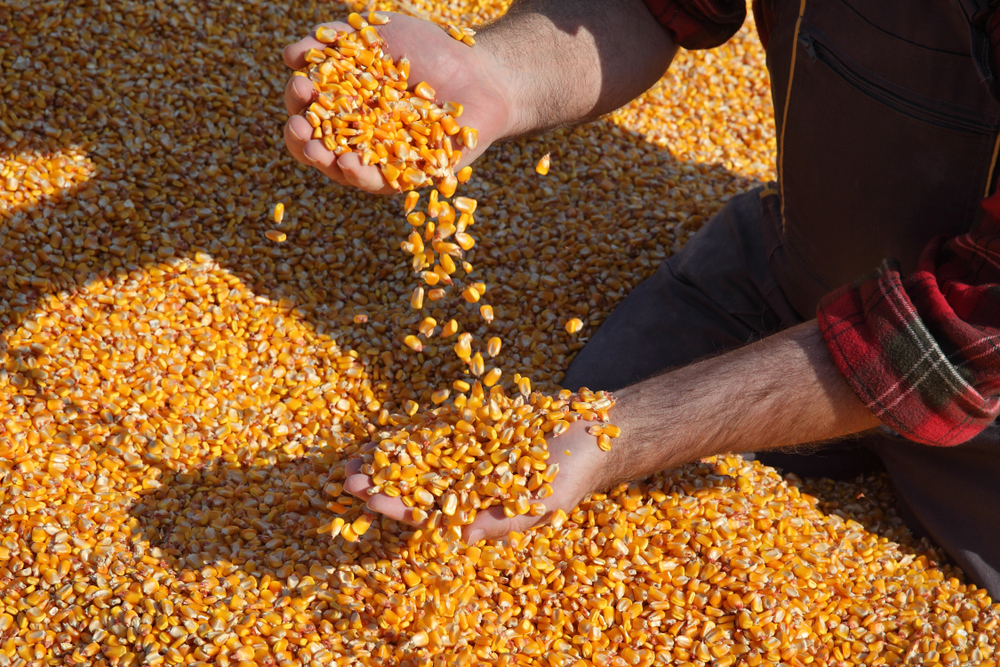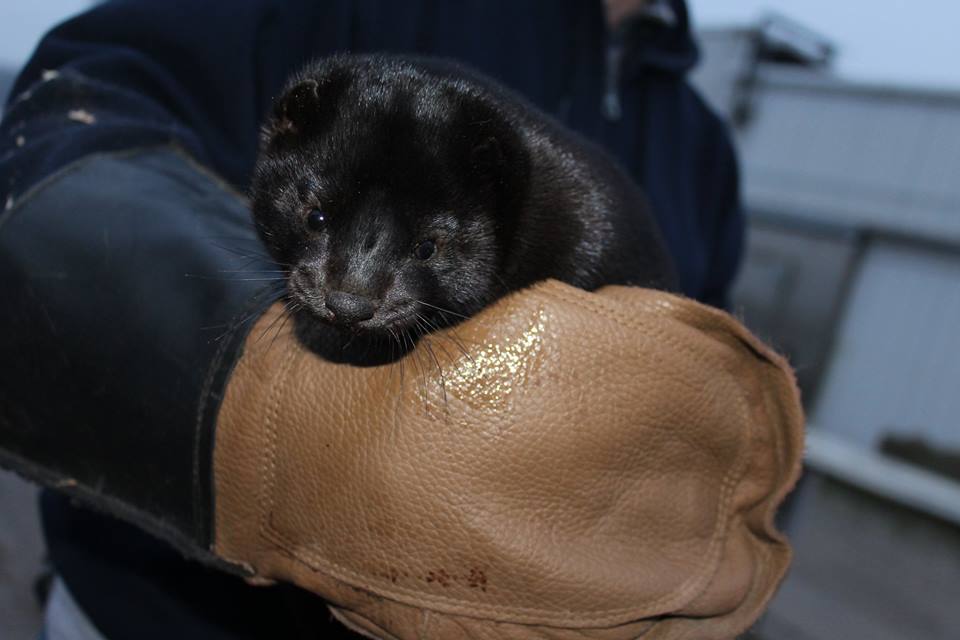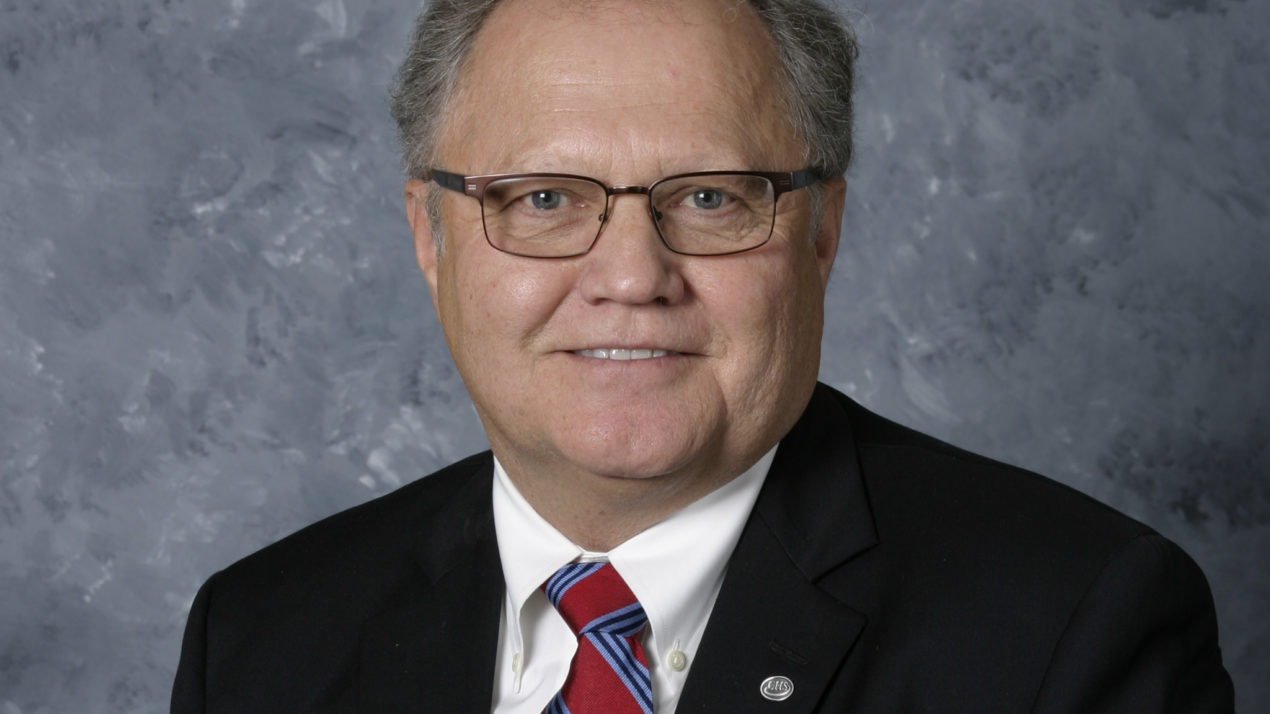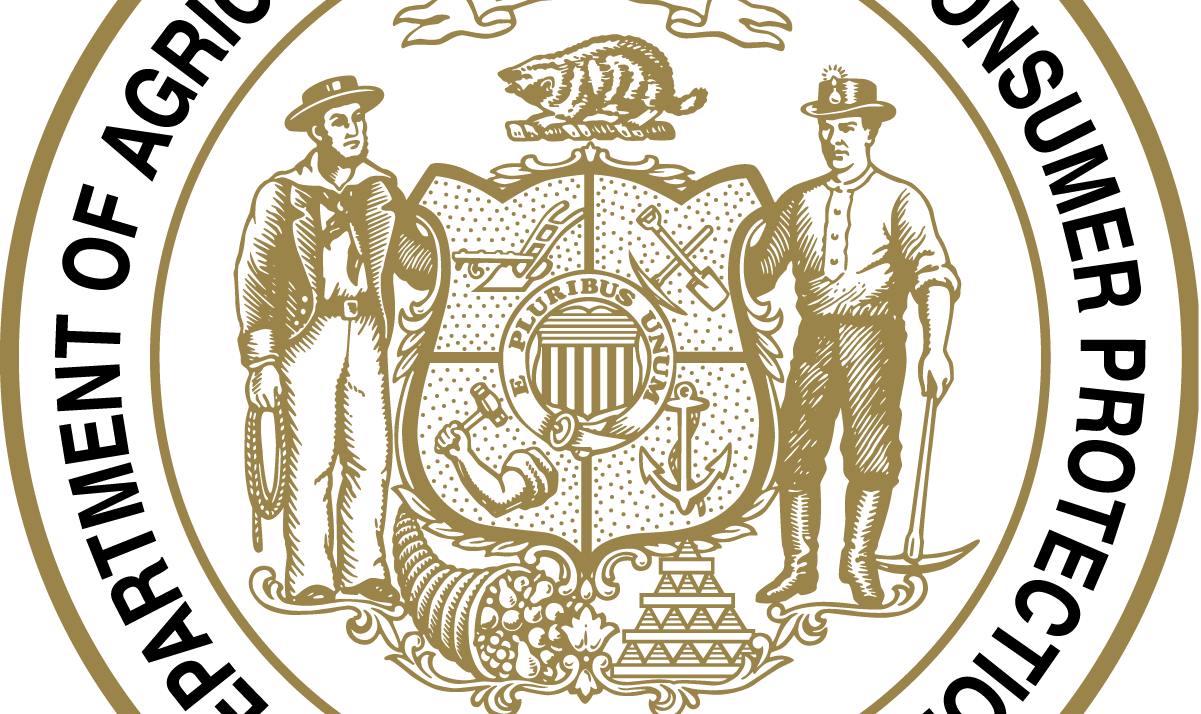Final Crop Report Says 517 Million Corn Bushels in 2020

Corn for grain production in Wisconsin during 2020 is estimated at 517 million bushels, according to the USDA, National Agricultural Statistics Service Crop Production 2020 Summary report. This estimate is down 3% from the November 1 forecast but up 17% from 2019. Wisconsin’s corn for grain yield is estimated at 174 bushels per acre, 10 bushels below the November 1 forecast. Area harvested for grain is estimated at 2.97 million acres, up 70,000 acres from the November 1 forecast and 300,000 acres above 2019. Corn planted for all purposes in 2020 is estimated at 4.00 million acres, the same as the November 1 estimate and up 5% from 2019.
Corn for silage production is estimated at 20.4 million tons, up 12% from 2019. The silage yield estimate of 21.0 tons per acre is 3.5 tons higher than 2019. Producers harvested 970,000 acres of corn for silage, a decrease of 70,000 acres from 2019.
Soybean production is estimated at 100 million bushels in 2020, down 4.47 million bushels from the November 1 forecast but 26% above 2019. Wisconsin soybean growers averaged 51.0 bushels per acre in 2020, down 2.0 bushels from the November 1 forecast but 4.0 bushels above the 2019 yield. The harvested acreage of 1.97 million is down 10,000 acres from November 1 but up 280,000 acres from 2019. Soybean planted acreage, at 2.00 million acres, is up 14% from 2019.
All dry hay production for the state is estimated at 3.48 million tons, up 25% from 2.78 million tons in 2019. Producers averaged 2.54 tons per acre, up from 2.14 tons per acre in 2019. All hay harvested acres are estimated at 1.37 million acres, up 70,000 acres from 2019.
Alfalfa and alfalfa mixtures for dry hay production is estimated at 2.69 million tons, up 27% from 2.11 million tons in 2019. Producers averaged 3.20 tons per acre, up from 2.40 tons per acre in 2019. Harvested acres, at 840,000, were down 40,000 acres from 2019. Wisconsin producers seeded 400,000 acres of new seedings of alfalfa and alfalfa mixtures in 2020, down 80,000 acres from the previous year.
Other dry hay production is estimated at 795,000 tons, 18% above 2019. Producers averaged 1.50 tons per acre, down from 1.60 tons per acre in 2019. Harvested acres of other hay, at 530,000, were up 110,000 acres from the previous year.
Potato production for 2020 is estimated at 27.8 million cwt, down 3% from 2019. Yield is estimated at 400 cwt per acre, down 10 cwt per acre from last year. Planted and harvested acres are estimated at 70,000 acres and 69,500 acres, respectively.
Snowmobilers: Think Smart Before You Start

With winter officially in full swing in Wisconsin, the Wisconsin Department of Natural Resources (DNR) reminds snowmobilers that safety is key for the best ride.
Snowmobiling got off to a deadly start last year. There were 19 snowmobile fatalities between January and March 2020, three of those involving someone under the age of 18.
“Most snowmobile crashes are preventable. Alcohol, excess speed, driver inexperience and operator error are the leading causes of snowmobile fatalities,” said DNR Conservation Warden Lt. Martin Stone. “Safety is an important part of the ride. Make sure to brush up on safety rules and regulations before you head out this winter.”
There is no such thing as 100% safe ice. Snowmobilers cannot judge ice’s strength by factors like appearance, age, thickness or temperature, especially when the ice is snow-covered. Before heading out, snowmobilers are encouraged to contact local fishing clubs, snowmobile clubs or outfitters to inquire about ice conditions, as the DNR does not monitor these conditions.
Any person who is at least 12 years old and born on or after Jan. 1, 1985 is required to have a valid Snowmobile Safety Certificate to operate a snowmobile in most areas. Operators must carry the certificate while riding and display it to a law enforcement officer when requested. More snowmobile regulations are available here.
Think smart before you start this season by following these tips:
ON THE TRAILS
- Don’t drink and ride.
- Stay on marked trails and routes.
- Always stay to the right side of the trail, especially in corners. The trails are public; never ride like there is no one else coming.
- Always come to a complete stop at all stop signs and road crossings and yield to motor vehicle traffic. When stopped, look both ways and cross only when it’s safe.
- Always wear your helmet and safety gear.
- Use extra caution at night. When traveling at night, operate at reasonable speeds as to not overdrive what headlights can illuminate, such as trail markers or hazards. Remember that there is a 55 mph speed limit at night.
- Travel with a friend, carry a cell phone and let people know where you are going and when you’ll return home.
- Dress appropriately and carry a first-aid kit and navigation tools.
- Take a snowmobile safety course. Visit the DNR Safety Education webpage for details and to locate a class or take an online course.
ICE SAFETY
The DNR does not monitor local ice conditions or the thickness of the ice. Local bait shops, fishing clubs and resorts serve winter anglers every day and often have the most up-to-date information about ice thickness on local lakes and rivers, as well as areas that are especially dangerous.
- Remember that ice is never completely safe under any conditions.
- Contact local sports shops to ask about ice conditions locally.
- Wear proper clothing and equipment, including a life jacket or a float coat to help stay afloat and slow body heat loss.
- Do not travel in unfamiliar areas.
- Slow down when traveling at night.
- Know if the lake has inlets, outlets or narrows with currents that can thin the ice.
- Watch out for pressure ridges or ice heaves. These can be dangerous due to thin ice and open water.
Additional information on snowmobile safety classes, regulations, safety tips and snowmobile registration is available here.
Gov. Tony Evers shares rural priorities for the biennial budget including broadband and meat processing
Mink producers could be included in Wisconsin’s next round of COVID-19 vaccines

A state Vaccine Distribution Subcommittee released recommendations this week for which groups should be included in Phase 1b for receiving the COVID-19 vaccine such as people 70-years-old and older, first responders, educators, as well as members of Wisconsin’s mink industry.
The State Disaster Medical Advisory Committee (SDMAC) established the subcommittee to create guidance for the Department of Health Services (DHS) regarding the allocation of the limited number of vaccine doses. The committee noted rationing available vaccines will be necessary until production and distribution increases.
The Phase 1a priority groups included health care personnel and residents of long-term care facilities. Now creating recommendations for the second phase, the committee looked to public-facing essential workers who are at risk based on the essential nature of their jobs.
Under Mink Husbandry, the committee explained international outbreaks associated with mink husbandry resulted in genomic changes of the SARS-CoV-2 virus.
“These changes are concerning and pose a biosecurity risk for the current vaccine campaign,” the drafted report read. “Vaccine should be prioritized for this group to reduce possible mink variants of the virus that could result in spike-protein chances.”
The virus can be spread between human and mink populations. The subcommittee expressed concern after noting viral mutations associated with mink populations in Denmark included seven different changes to the spike protein, which could make the current vaccines ineffective.
In Taylor County Wisconsin, the National Veterinary Services Laboratories confirmed dead mink tested positive for COVID-19 in October. Wisconsin was the second state with the virus at a mink farm. Utah confirmed its first cases Aug. 17.
The report said Wisconsin has 21 mink farms in 13 counties with an estimated population of nearly 300 people who have direct contact with mink or mink pelts.
As DHS continues its considerations for COVID-19 vaccine distributions, Wisconsin Department of Agriculture, Trade, and Consumer Protection Secretary-Designee Randy Romanski said he invites everyone in agriculture to take part by submitting comments.
“SDMAC considers all the needs that are out there, and they are following guidelines to make sure they try to get the vaccine out as quickly as possible to as many people as possible,” Romanski said. “We’ve been encouraging the agriculture industry to make sure they’re participating in that program so their voices are heard.”
The subcommittee is taking public recommendations until Jan. 18 at 4 p.m. They can be submitted to [email protected] with “vaccine subcommittee” and “Phase 1B” in the subject line.
–Kaitlyn Riley
Cooperative Network Announces New Board of Directors

Under recently-approved articles and bylaws, Cooperative Network has moved forward with the election of a new, nine-member board of directors.
The organization is pleased to announce that the following nine directors have been elected to the Cooperative Network board:
- David Johnsrud, Chairman, nominated by CHS, Inc.
- Greg Sacia, Vice-Chairman, nominated by Riverland Energy Cooperative
- Michele Steien, Secretary/Treasurer, nominated by Co-op Credit Union
- Sadie Frericks, nominated by Land O’Lakes, Inc.
- Audrey Hjelle, nominated by Great River Energy
- Roger Hildebrandt, nominated by Foremost Farms USA
- Christa Hoffman, nominated by GENEX
- Amber Horn-Leiterman, nominated by Land O’Lakes, Inc.
- James Kinzie, nominated by Bayfield Electric Cooperative
These directors will help guide the future activities of the organization as representatives of its cooperative members throughout Minnesota and Wisconsin.
“I am confident Cooperative Network will be well-served by the new board of directors, who represent our diverse cooperative members across Minnesota and Wisconsin,” said Cooperative Network President and CEO, Daniel Smith. “I look forward to working with the board to provide world-class government affairs, cooperative advocacy and professional development programs to our members.”
David Johnsrud, of Starbuck, Minnesota, has served on the Cooperative Network board of directors since 2014 and was recently elected by his peers to serve as Board Chairman.
“I’m sincerely honored and grateful for the support that allows me to represent all members on the Cooperative Network Board, as Chairman,” expressed Johnsrud. “I feel the entire board and staff is a group of dedicated people willing to put forth the commitment needed to make CN the best it can be to represent all its cooperative members when speaking on their behalf, while also providing pertinent and timely educational programs.”
Johnsrud continued, “Relationships need to be maintained and lines of communication should continually be open between staff and all members to better understand each member concern, which in turn helps Cooperative Network to advocate on their behalf. I very much look forward to the future when we can once again meet in person with all members to further accomplish these aspirations.”
On-Farm Grain Storage Capacity Stays at 380 Million Bushels

Wisconsin on-farm storage capacity on December 1, 2020, was 380 million bushels, no change from December 1, 2019, according to the latest USDA, National Agricultural Statistics Service – Grain Stocks report. Wisconsin’s 340 off-farm storage facilities have a storage capacity of 405 million bushels, up 10 million bushels from the previous year. As of December 1, 2020, Wisconsin had a total of 785 million bushels of storage capacity.
On-farm capacity included all bins, cribs, sheds, and other structures located on farms that are normally used to store whole grains, oilseeds, or pulse crops. Off-farm capacity included all elevators, warehouses, terminals, merchant mills, other storage, and oilseed crushers which store whole grains, soybeans, canola, flaxseed, mustard seed, safflower, sunflower, rapeseed, Austrian winter peas, dry edible peas, lentils, and chickpeas/garbanzo beans. Capacity data exclude facilities used to store only rice or peanuts, oilseed crushers processing only cottonseed or peanuts, tobacco warehouses, seed warehouses, and storage facilities that handle only dry edible beans, other than chickpeas/garbanzo beans.
DATCP Awards $750,000 in Grants to 30 Producer-Led Groups

The Wisconsin Department of Agriculture, Trade and Consumer Protection (DATCP) has awarded $750,000 in producer-led watershed protection grants to 30 farmer-led groups. Grants support producer-led conservation solutions by encouraging innovation and farmer participation in on-the-ground efforts to improve Wisconsin’s soil health and water quality.
“Our partnership with DATCP’s producer-led program is one of our core assets,” said Chris van Someren of Jon-De Farm and the Western Wisconsin Conservation Council, a producer-led group. “The cost-sharing part of the program is extremely helpful in motivating our members to experiment with and implement practices that protect soil and water health. Beyond the capacity for funding, the program brings the added benefits of education, communication, and collaboration between farmers across the state. This kind of cooperation between government and farmers will be a critical part of Wisconsin’s conservation efforts moving forward.”
New to the grant program this year is a conservation benefits tracking component. DATCP will use this to measure the water quality benefits associated with the conservation practices implemented by participating farmers throughout the state.
This is the sixth round of grant awards since funding started with the 2015-17 state budget. During the first year, 14 producer-led groups submitted applications totaling over $242,000. In response to an increase in applications and interest in the program since its inception, Governor Tony Evers increased the annual program funding to $750,000 in the 2019-2021 state budget. For more information about current producer-led projects and contact information for groups, visit https://datcp.wi.gov/Pages/Programs_Services/ProducerLedProjects.aspx.
2021 Grant Awards
First-time award recipients include:
- Biological Farming Friends: $16,500
- Central Wisconsin Farmers’ Collaborative: $19,800
- Lake Wisconsin Farmer Watershed Council: $15,000
Previously funded projects receiving new grants:
- Bear Creek/Chippewa Farmer Groundwater Group: $23,475
- Buffalo-Trempealeau Farmer Network: $40,000
- Buffalo County Conservation Farmers: $14,984
- Calumet County Ag Stewardship Alliance: $6,250
- Dodge County Farmers for Healthy Soil & Healthy Water: $39,093
- Eau Pleine Partnership for Integrated Conservation: $30,000
- Farmers for Lake Country: $15,000
- Farmers of the Sugar River: $14,700
- Farmers for Tomorrow: $30,000
- Farmers of Barron County: $17,200
- Farmers of Mill Creek: $31,749
- Farmers for the Upper Sugar River: $31,749
- Horse Creek Farmer-Led Watershed Council: $28,950
- Lafayette Ag Stewardship Alliance: $30,000
- Ozaukee County Clean Farm Families: $30,000
- Peninsula Pride Farms: $30,000
- Producers of Lake Redstone: $30,000
- Red Cedar Conservation Farmers: $30,000
- Sauk Soil and Water Improvement Group: $30,000
- Sheboygan River Progressive Farmers: $35,000
- The Shell Lake – Yellow River Farmer-Led Watershed Council: $12,750
- South Kinni Farmer-Led Watershed Council: $15,000
- Tainter Creek Farmer-Led Watershed Council: $30,000
- Uplands Watershed Group: $13,000
- Watershed Protection Committee of Racine County: $40,000
- Western Wisconsin Conservation Council: $30,000
- Yahara Pride Farms: $30,000
37 Wisconsin Farmers Markets Receive Grants from Compeer

Compeer Financial’s Fund for Rural America, the Farm Credit cooperative’s giving program, has awarded 73 Farmers Market Grants, totaling $64,970. This is the third year Compeer Financial has offered these grants.
The grants are supporting 60 farmers market organizations, with funding up to $1,000 for marketing, technology or educational efforts. Ten of those farmers markets are located in the metropolitan areas of Cook County, Ill., Hennepin County, Minn. and Milwaukee County, Wis. Three of these urban markets serve communities designated as food deserts.
“Farmers markets bring fresh, healthy foods directly to communities in an accessible way,” said Karen Schieler, senior corporate giving specialist at Compeer Financial. “Many markets have had to make changes and navigate the challenges presented during the pandemic. Through these grants, we hope to recognize the huge asset that farmers markets are to our communities – rural, suburban and urban alike.”
Grants to farmers markets will directly impact 2,118 people and impact 1.6 million people through the communities they serve. Thirteen farmer vendors also received up to $500. The Fund will offer this grant again in the fall to provide funding for 2022.
The following Wisconsin markets received grants:
Baldwin’s Main St. Farmers Market
Beloit Farmers’ Market
Burnett County Farmers Market (Siren)
Chilton Farmers Market
Columbus Park Farmers Market (Kenosha)
Darlington Farmers Market
DeForest Farmers Market
Dodgeville Farmers Market
Downtown Fond du Lac Farmers Market
Eau Claire Downtown Farmers Market
Elkhart Lake Farmer’s and Artisan’s Market
Galesville Farmer’s and Artisan’s Market
Greendale Downtown Market
Greenfield Farmers Market
Horicon Farmers Market
Hudson Farmers Market at Plaza 94
Janesville Farmers Market, Inc.
Kenosha HarborMarket
Lodi Valley Farmers Market
Mount Horeb Farmers Market
New Berlin Farmers Market
North Side Pop-up Farmers Market (Milwaukee)
Oconomowoc Farmers’ Market
Oshkosh Saturday Farmers’ Market Inc.
Platteville Farmer’s Market
Roberts, WI Farmers Market
Somerset Farmers Market
Sparta Wisconsin Farmers Market
Spooner Farmers Market
Sun Prairie Famer’s Market
TCC Farmers Market (Mayville)
The Camp Douglas Farmer’s Market
Thiensville Village Market
Westfields Hospital and Clinic (New Richmond)
Westside Community Market (Madison)
Whitewater City Market
Winter Farmers Market (La Crosse)
Dairy Cattle Show Judges Announced for World Dairy Expo 2021

World Dairy Expo® announced via The Dairy Show, Expo’s podcast, the slate of 16 judges selected to evaluate North America’s finest dairy cattle at World Dairy Expo, September 28 through October 2, 2021. Official judges were voted on by 2019 Dairy Cattle Show Exhibitors. Meanwhile, associate judges were once again nominated by the corresponding official judge and reviewed by selection committees. The complete roster was then approved by Expo’s Dairy Cattle Exhibitor Committee. These individuals bring a global perspective to Expo’s world-renowned show in Madison, Wisconsin.
The group of judges for the 54th World Dairy Expo is as follows:
International Ayrshire Show
Official: Michael Creek, Hagerstown, Md.
Associate: Jamie Howard, Burgessville, Ontario, Canada
International Brown Swiss Show
Official: Lynn Harbaugh, Marion, Wis.
Associate: Phillip Topp, Botkins, Ohio
International Guernsey Show
Official: Molly Sloan, Columbus, Wis.
Associate: Glyn Lucas, Dumfries Galloway, Scotland
International Holstein Show
Official: Mike Berry, Powell Butte, Ore.
Associate: Tom DeGroot, Rosedale, British Columbia, Canada
International Junior Holstein Show
Official: Brandon Ferry, Hilbert, Wis.
Associate: Tyler Reynolds, Corfu, N.Y.
International Jersey Show
Official: Chad Ryan, Fond du Lac, Wis.
Associate: Kevin Doeberiener, West Salem, Ohio
International Milking Shorthorn Show
Official: Dean Dohle, Halfway, Mo.
Associate: Keith Fisher, New Enterprise, Pa.
International Red & White Show
Official: Pierre Boulet, Montmagny, Quebec, Canada
Associate: Richard Landry, Ste-Brigitte-des-Saults, Quebec, Canada
Serving as the meeting place of the global dairy industry, World Dairy Expo brings together the latest in dairy innovation and the best cattle in North America. Crowds of more than 62,000 people, from nearly 100 countries, will return to Madison, Wis. for the 54th event, September 28 through October 2, 2021, when the world’s largest dairy-focused trade show, dairy and forage seminars, a world-class dairy cattle show and more will be on display. Download the World Dairy Expo mobile event app, visit worlddairyexpo.com or follow WDE on Facebook, Twitter, Instagram or YouTube for more information.
Beginning in Ayrshires Grant Offered for 2021

The Wisconsin Ayrshire Breeders’ Association is proud to offer its Beginning in Ayrshires Grant for its fourth year. This grant annually chooses a farmer to receive $1,000 towards the purchase of a registered Ayrshire cow.Ayrshire cattle have many positive attributes in production and reproduction, and fit well into all types of dairy farms. Many farmers enjoy their low somatic cell count, reliable production, and competitiveness in the show ring.
The Beginning in Ayrshires Grant is awarded to a Wisconsin resident actively engaged in dairy farming, who has a strong interest in the breed and plans for their future in farming. The grant is awarded at the annual meeting, this year to be held in Tomah at the Cranberry Lodge on March 6th, 2021.
The $1,000 will be given as a voucher, redeemable at the annual Wisconsin Ayrshire Spring Sale, which will be held on April 17, 2021 in Thorp.
Applications can be obtained by visiting the Wisconsin Ayrshire Breeders’ Association Facebook page, or by contacting Monica Schwittay, at 920-980-5722 or by email [email protected]. Applications are due January 20th, 2021.


